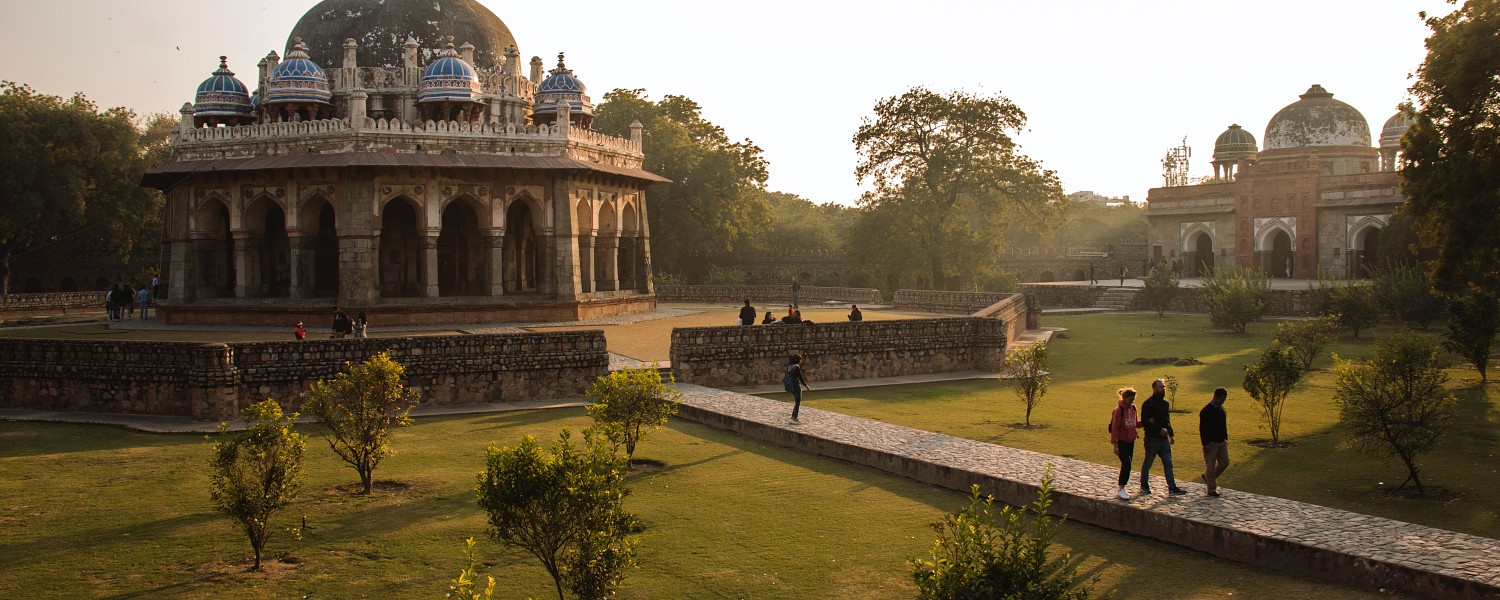
Provided by:
Siddhant Singh/Unsplash.com

Our travel guides are free to read and explore online. If you want to get your own copy, the full travel guide for this destination is available to you offline* to bring along anywhere or print for your trip.
*this will be downloaded as a PDF.Price
€4,95
The City
The guide was updated:
The plain area to the west of the Yamuna River, where Delhi lies today, has been a centre of civilisation for millennia. Indraprastha, the city of the Pandavas, is mentioned in the 3,000-year-old Mahabharata Hindu text, a city on the site where the Old Fort now stands.
Delhi is a city of metamorphosis in terms of physical buildings, people, and culture from the early Hindu rulers to Islam. There was a succession of Islamic dynasties, reaching their zenith with the architectural wonders of the Mughals and, in particular, Shah Jahan, builder of the Red Fort and Jama Masjid. His city, Shahjahanabad, is today’s Old Delhi with its tangled, intoxicating streets and bazaars.
This contrasted with the imperial project of the last rulers of India, the British, who in 1911 built their imperial capital to the south of Old Delhi. The broad boulevards and geometric order of New Delhi give the capital its other distinct half. Designed by Lutyens, the European classical grandeur now has a distinctly Indian flavour, and much of New Delhi is fast gaining the shiny glass-and-steel look of the modern Asian metropolises. You will find all races, faiths and customs of every region of India alongside one another on the streets of Delhi.
Delhi is a city of metamorphosis in terms of physical buildings, people, and culture from the early Hindu rulers to Islam. There was a succession of Islamic dynasties, reaching their zenith with the architectural wonders of the Mughals and, in particular, Shah Jahan, builder of the Red Fort and Jama Masjid. His city, Shahjahanabad, is today’s Old Delhi with its tangled, intoxicating streets and bazaars.
This contrasted with the imperial project of the last rulers of India, the British, who in 1911 built their imperial capital to the south of Old Delhi. The broad boulevards and geometric order of New Delhi give the capital its other distinct half. Designed by Lutyens, the European classical grandeur now has a distinctly Indian flavour, and much of New Delhi is fast gaining the shiny glass-and-steel look of the modern Asian metropolises. You will find all races, faiths and customs of every region of India alongside one another on the streets of Delhi.


